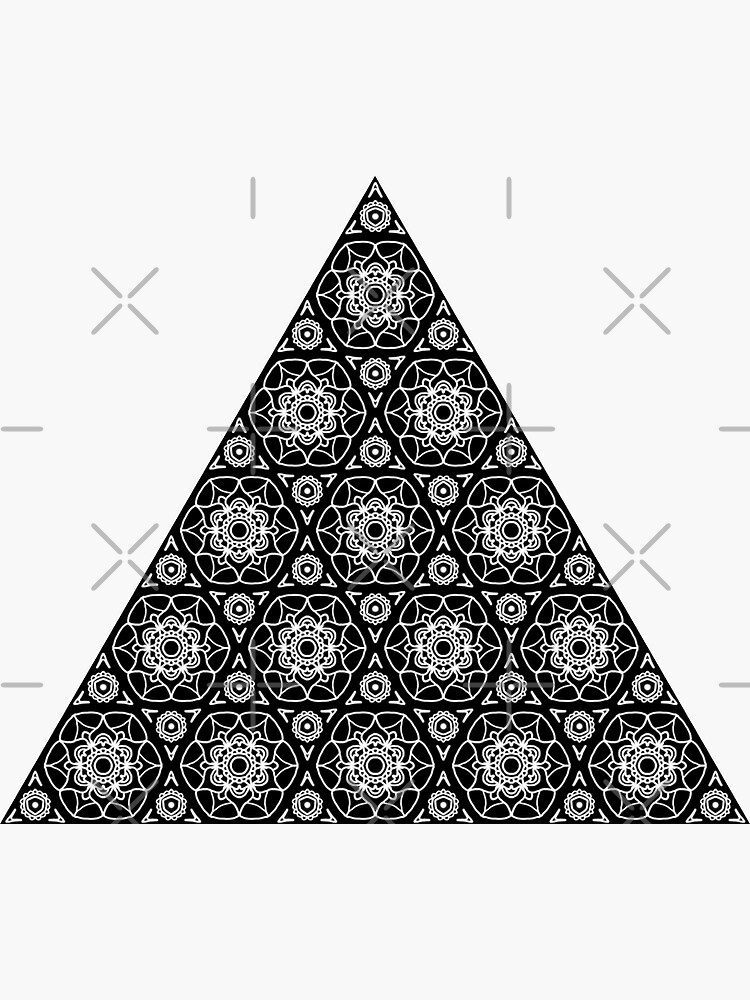
At first sight this tiling resembles the Stampfli tiling. Thus the tiling one gets from doubling the tessellation of hexagons and triangles is not self-similar. This tiling is quite different to the tiling above. Tiling resulting from the position of the rings. Thus we get the centers of the rings from the projection method using L=2 for the size of the hexagons. They are the corner points of a regular tesselation of hexagons. This is easily seen from the points where three lines meet. Thus these hexagons are twice as large as in a simple tessellation of hexagons. Thus the distance between the centers of the hexagons is sqrt(3)/2 times the length of the side of the hexagon. Their sides have two times the length of the sides of the rhombs. The centers of the hexagons are the points where six lines meet. Two hexagons have to form a twelve-pointed star to give as a ring. We see that there are hexagons in the single grid. As before we want to know where these rings lie. This inflates the rings and leaves place for the triangles. But the rhombs between the hexagons are now outside the ring and the squares are inside. Each new shape will tessellate because the interior angles around the vertex will always add up to 360°.Part of the double grid that makes such a ring.Īs in the Socolar tiling hexagons come in pairs and rings of hexagons appear. Although these shapes have been altered, the interior angles will still add up to 360° (for the shape based on a square) and 720° (for the shape based on a hexagon). The interior angles of a square add up to 360°, and the interior angles of a hexagon add up to 720°, which is two times 360°. Teeters (Palo Alto, CA: Creative Publications, 1977). Another useful resource book for teachers is Creating Escher-type Drawings by E. Escher (London: Pan/Ballantine, 1961), and in posters and calendars. These are available in a number of books, such as The Compiling a collection of Escher designs for students to examine would be worthwhile. He designed an amazing collection of interesting shapes that fit together to cover a plane. The best known creator of such tessellations is M. The students may find that the way in which they have coloured their patterns alters the order of rotational symmetry. Therefore the pattern will have rotational symmetry of order 6. Why does the equilateral triangle tessellate to a pattern with rotational symmetry of order 6? The internal angle of the equilateral triangle is 60°.Ħ x 60 = 360, so it takes six equilateral triangles to make up 360° at the point where the vertices meet. If the shape is then used to tessellate the plane, the pattern created has rotational symmetry of order 6. This gives a shape that has rotational symmetry of order 3, that is, the shape matches onto itself exactly three times during one complete turn.

Get the students to start with a regular shape, such as an equilateral triangle, and cut and paste it as shown in the illustrations. The example on the following page is a good starting point. It is important that they do this because it may be only through discussion that they find that they have created the tessellation by using rotations, reflections, or translations.Įncourage the students to examine their tessellations for symmetries.

In question 2b, the students discuss with a classmate why their shapes tessellate. Using contrasting colours for adjacent tiles can be an effective technique. They can experiment with tessellating their shape and using colour to complete the

By adding lines, marks, and colours, they can develop the artistic aspect of their tessellation and add an individual flavour to their patterns. If they have difficulty imagining an interesting animal or object, they could discuss their shapes with classmates to get ideas. The students can alter all the sides of the polygon differently. This method for creating tessellations is restricted to equilateral triangles, squares, and regular hexagons.


 0 kommentar(er)
0 kommentar(er)
